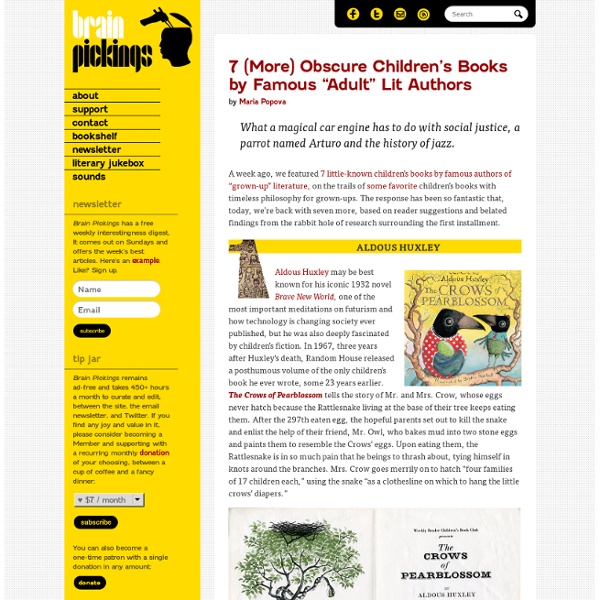New Year's Resolution Reading List: 9 Essential Books on Reading and Writing
by Maria Popova Dancing with the absurdity of life, or what symbolism has to do with the osmosis of trash and treasure. Hardly anything does one’s mental, spiritual, and creative health more good than resolving to read more and write better. Today’s reading list addresses these parallel aspirations. And since the number of books written about reading and writing likely far exceeds the reading capacity of a single human lifetime, this omnibus couldn’t be — shouldn’t be — an exhaustive list. It is, instead, a collection of timeless texts bound to radically improve your relationship with the written word, from whichever side of the equation you approach it. If anyone can make grammar fun, it’s Maira Kalman — The Elements of Style Illustrated marries Kalman’s signature whimsy with Strunk and White’s indispensable style guide to create an instant classic. On a related unmissable note, let the Elements of Style Rap make your day. On the itch of writing, Lamott banters: On why we read and write:
7 Nonfiction Children's Books Blending Whimsy and Education
by Maria Popova From typography to tsunamis by way of quantum physics, or what Langston Hughes has to do with LEGO. Artful and fanciful children’s books make frequent cameos around here. Part of what makes them so great is their ability to whisk the young reader away into an alternate reality full of whimsy and possibility. But the present reality is often full of so much fascination we need not escape it to have our curiosity and imagination tickled. We’ve previously seen how comic books can be a medium for nonfiction, and today we turn to 7 wonderful kind-of-children’s books that bring imaginative storytelling to real, and in many cases serious, issues for young minds to ponder. Images via Imprint Prolific poet, social activist, novelist, playwright, and columnist Langston Hughes is considered one of the fathers of jazz poetry, a literary art form that emerged in the 1920s and eventually became the foundation for modern hip-hop. HT @Lissa Rhys; images courtesy of Mark Batty Publisher
How to Find Your Purpose and Do What You Love
“Find something more important than you are,” philosopher Dan Dennett once said in discussing the secret of happiness, “and dedicate your life to it.” But how, exactly, do we find that? Surely, it isn’t by luck. Every few months, I rediscover and redevour Y-Combinator founder Paul Graham’s fantastic 2006 article, How to Do What You Love. What you should not do, I think, is worry about the opinion of anyone beyond your friends. More of Graham’s wisdom on how to find meaning and make wealth can be found in Hackers & Painters: Big Ideas from the Computer Age. Alain de Botton, modern philosopher and creator of the “literary self-help genre”, is a keen observer of the paradoxes and delusions of our cultural conceits. In The Pleasures and Sorrows of Work, he takes his singular lens of wit and wisdom to the modern workplace and the ideological fallacies of “success.” His terrific 2009 TED talk offers a taste: One of the interesting things about success is that we think we know what it means. 16.
Share Book Recommendations With Your Friends, Join Book Clubs, Answer Trivia
The Mohawks Who Built Manhattan
For generations, Mohawk Indians have left their reservations in or near Canada to raise skyscrapers in the heart of New York City. High atop a New York University building one bright September day, Mohawk ironworkers were just setting some steel when the head of the crew heard a big rumble to the north. Suddenly a jet roared overhead, barely 50 feet from the crane they were using to set the steel girders in place. “I looked up and I could see the rivets on the plane, I could read the serial numbers it was so low, and I thought ‘What is he doing going down Broadway?’” recalls the crew’s leader, Dick Oddo. At first, Oddo says, he thought it was pilot error. Like Oddo, most of the Mohawk crews working in New York City on Sept. 11, 2001, headed immediately to the site of the disaster. In the months that followed, many Mohawk ironworkers volunteered to help in the cleanup. Walking the iron Mohawks have been building skyscrapers for six generations. Then tragedy struck. Gangs of New York



